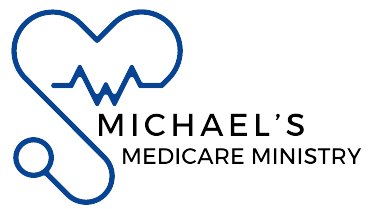Choosing the right healthcare coverage can be a complex process, particularly when you’re exploring Medicare plans in Beaverton. With a multitude of plans and providers to consider, making an informed decision requires careful consideration of various factors. Here’s a detailed guide to help you navigate your choices and select the plan that best fits your needs.

1. Start by Assessing Your Healthcare Needs
The first step in selecting the best plan is to thoroughly assess your healthcare needs. Consider the following:
- Current Health Conditions: Do you have any chronic conditions or ongoing health issues that require regular attention?
- Medications: Are you taking prescription drugs that need to be covered?
- Doctor Visits: How often do you visit your primary care physician or specialists?
- Hospitalization: Have you had recent hospital stays or expect potential surgeries?
Understanding your health needs will help you evaluate which plans offer the appropriate coverage and benefits.
2. Familiarize Yourself with the Types of Plans Available
There are several types of healthcare coverage options available, and each has its own set of benefits:
- Original Medicare: This typically includes Part A (hospital insurance) and Part B (medical insurance). It covers many healthcare services but might require you to pay deductibles, copayments, and coinsurance.
- Medicare Advantage Plans: These are an alternative to Original Medicare and often include additional benefits like vision, dental, and hearing coverage. They are offered by private insurers and may have different networks of doctors and hospitals.
- Medicare Supplement Plans: Also known as Medigap, these plans help cover costs not covered by Original Medicare, such as deductibles and coinsurance. They are available from private insurers and can help reduce out-of-pocket expenses.
Understanding the differences between these options will guide you in choosing the plan that aligns with your healthcare needs and preferences.
3. Compare Plan Costs
Cost is a critical factor when evaluating healthcare coverage. Consider the following costs:
- Monthly Premiums: This is the amount you pay each month for your coverage. Compare premiums across different plans to find one that fits your budget.
- Deductibles: This is the amount you pay out-of-pocket before your insurance starts to cover services. Higher deductibles may result in lower monthly premiums and vice versa.
- Copayments and Coinsurance: These are your share of the costs for services after you’ve met your deductible. Evaluate these costs to understand how they might impact your overall expenses.
By comparing these costs, you can find a plan that offers the best value based on your financial situation and healthcare needs.
4. Check Network Restrictions
If you have preferred doctors or healthcare facilities, it’s important to check if they are included in the network of the plans you’re considering. Some plans may require you to use a specific network of providers, while others offer more flexibility.
- Provider Networks: Verify that your current doctors and specialists are part of the plan’s network or are available through out-of-network coverage if necessary.
- Hospital Networks: Ensure that any hospitals or medical facilities you might need to visit are included in the plan’s network.
Choosing a plan that includes your preferred healthcare providers can make managing your care more convenient and effective.
5. Review Additional Benefits
Many plans offer additional benefits beyond basic coverage. Consider whether these extra features are important to you:
- Vision and Dental Coverage: Some plans include coverage for eye exams, glasses, dental cleanings, and other related services.
- Hearing Aids: Look for plans that offer benefits for hearing exams and hearing aids if you need these services.
- Fitness Programs: Some plans offer gym memberships or fitness programs to help maintain your overall health.
These additional benefits can enhance your overall healthcare experience and potentially save you money on services not covered by basic plans.
6. Understand Enrollment Periods
Enrollment periods dictate when you can sign up for or switch plans. Be aware of the following:
- Initial Enrollment Period: This is the 7-month period that begins 3 months before you turn 65 and ends 3 months after your 65th birthday.
- Open Enrollment Period: This occurs annually from October 15 to December 7, allowing you to make changes to your plan.
- Special Enrollment Periods: These are available in specific situations, such as moving to a new area or losing other health coverage.
Staying informed about these periods ensures you don’t miss important deadlines and have the opportunity to adjust your coverage as needed.
7. Seek Professional Advice
Navigating the various options can be overwhelming, and seeking advice from a professional can be beneficial. Consider consulting with a licensed insurance agent or a Medicare counselor who can provide personalized guidance based on your needs and preferences.
These experts can help clarify confusing terms, compare plans, and ensure that you make an informed decision about your healthcare coverage.

8. Review Plan Ratings and Customer Feedback
Before finalizing your choice, it’s helpful to review ratings and feedback from current plan holders. This can provide insights into the quality of service and satisfaction levels among users.
- Online Reviews: Look for customer reviews and ratings of the plans you’re considering.
- Plan Ratings: Check official ratings from sources like the Centers for Medicare & Medicaid Services (CMS) for information on plan performance.




